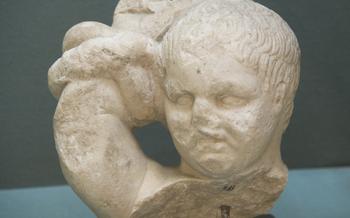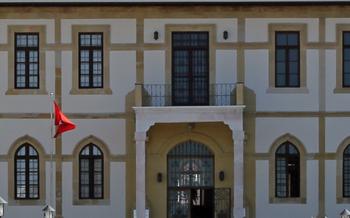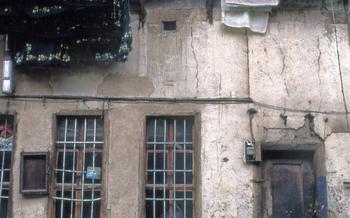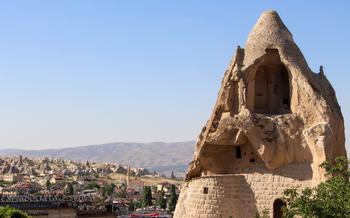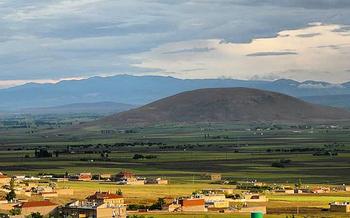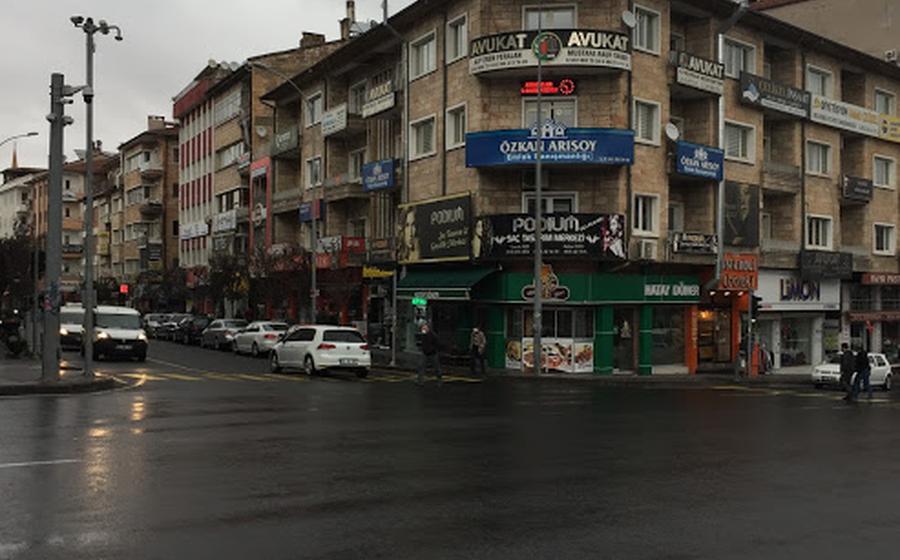
Atlas Carpet & Kilim
- Historical Background
- Unique Features of Atlas Carpets & Kilims
- Atlas Carpet & Kilim Museum
- Step-by-Step Guide to Carpet Weaving
- Meaning Behind the Designs
- Carpet Shopping Tips
- Carpet Care and Maintenance
- Local Artisans and Cooperatives
- Carpet Festivals and Events
- Carpet in Turkish Culture
- Unique Souvenirs and Gifts
- Immersive Experiences
- Off-the-Beaten-Path Destinations
- Insider Tip: Unveiling the Secrets of Carpet Weaving in Tranquility
Historical Background
The art of carpet weaving has a rich and storied past in Turkey, dating back to the nomadic tribes that roamed the Anatolian plains. These skilled artisans crafted carpets not only for practical purposes but also as a form of artistic expression, imbuing each design with cultural symbolism and personal narratives. Over time, these weaving traditions evolved, influenced by the diverse cultures of the region, including Persian, Byzantine, and Ottoman. The fusion of these influences led to the creation of unique and intricate carpet designs that showcased the artistry and craftsmanship of Turkish weavers.
Unique Features of Atlas Carpets & Kilims
Atlas carpets and of Turkey. These intricate designs are often inspired by nature, featuring stylized flowers, geometric shapes, and animal motifs. Each pattern holds a special meaning or symbolism, embodying stories and legends passed down through generations.
The use of natural dyes and hand-spun wool lends a unique charm to Atlas carpets and kilims. The vibrant colors, derived from plants, minerals, and insects, create a harmonious palette that is both eye-catching and soothing. The wool, sourced from local sheep, is carefully selected and spun by hand, ensuring its strength and durability.
Meticulous craftsmanship and attention to detail are hallmarks of Atlas carpets and kilims. Each knot is meticulously tied by skilled artisans, creating a dense and durable pile. The intricate patterns require a high level of precision and coordination, resulting in carpets that are both visually stunning and exceptionally well-made.
Atlas Carpet & Kilim Museum
Nestled in the heart of the Atlas Carpet & Kilim Factory, the Atlas Carpet & Kilim Museum is a treasure trove of Turkish carpet-weaving history and artistry. This world-class museum houses an extensive collection of antique and contemporary carpets, kilims, and related artifacts, offering visitors a comprehensive insight into the rich tapestry of Turkish carpet-making traditions.
Exhibits in the museum showcase the evolution of carpet designs and techniques over centuries, with a focus on the unique styles and motifs of the Nevşehir region. Interactive displays and multimedia presentations bring the history of Turkish carpets to life, allowing visitors to engage with the cultural significance and symbolism behind these intricate textiles. Visitors can also participate in hands-on workshops and demonstrations, where they can learn the basics of carpet weaving and try their hand at creating their own unique designs.
Step-by-Step Guide to Carpet Weaving
The art of carpet weaving entails a series of intricate steps that transform raw materials into vibrant masterpieces. To create an Atlas carpet or kilim, artisans meticulously follow traditional techniques that have been passed down through generations.
Preparing the Loom: The process begins with setting up the loom, a sturdy frame that holds the warp threads in place. These threads, typically made from cotton or wool, are stretched tautly to create the foundation for the carpet.
Threading the Warp: With expert precision, the artisan threads the weft threads through the warp threads, creating the horizontal rows that will form the pattern. The colors and thickness of the weft threads determine the design and texture of the carpet.
Knotting: The most intricate and time-consuming step is knotting, where the artisan uses a special tool to tie each weft thread around two adjacent warp threads. This process is repeated row by row, creating a dense and durable pile.
Beating the Knots: To ensure the knots are compact and secure, the artisan uses a comb-like tool to beat them down firmly. This step helps create a smooth and even surface.
Trimming the Pile: Once the weaving is complete, the artisan carefully trims the pile to achieve the desired height and texture. This step requires great skill and attention to detail to ensure a uniform appearance.
Finishing Touches: The final step involves securing the edges of the carpet and adding fringes or tassels for decorative purposes. The artisan may also apply a finishing solution to protect the fibers and enhance the colors.
Meaning Behind the Designs
The intricate patterns and motifs found in Turkish carpets are not merely decorative; they hold deep cultural significance and often tell stories and legends. Each design element carries a specific meaning or symbolism, reflecting the rich history and traditions of Turkish people.
For instance, the "tree of life" motif represents fertility, abundance, and the interconnectedness of all living things. The "evil eye" motif is believed to protect against negative energy and bring good luck. Geometric patterns often symbolize the balance and harmony of the universe.
The colors used in the carpets also have symbolic meanings. Red represents passion, love, and strength, while blue represents peace, tranquility, and wisdom. Green symbolizes nature and fertility, while yellow represents joy and happiness.
By understanding the symbolism behind the designs, visitors can gain a deeper appreciation for the artistry and cultural significance of Turkish carpets. They can also use this knowledge to choose a carpet that resonates with their personal beliefs and values.
Carpet Shopping Tips
When shopping for a carpet in Turkey, there are several factors to consider to ensure you make a worthwhile investment. First, assess the quality of the materials and construction. Look for carpets made from high-quality wool or silk, with a dense weave and even pile. Inspect the carpet for any imperfections or signs of wear.
Authenticity is another important consideration. Genuine Turkish carpets often have a unique stamp or label indicating their origin. Ask the seller for a certificate of authenticity to verify the carpet's provenance.
Negotiating the price is an integral part of the shopping experience. Be prepared to bargain politely and respectfully. Start with a fair offer and be willing to walk away if the seller is unwilling to negotiate.
To ensure the longevity of your carpet, consider its intended use and placement. Choose a carpet that is suitable for the amount of foot traffic it will receive and the environment in which it will be placed.
Carpet Care and Maintenance
Preserving the beauty and longevity of your Turkish carpet requires proper care and maintenance. Regular vacuuming using a soft brush attachment helps remove dust and dirt without damaging the delicate fibers. Avoid using harsh chemicals or detergents, as they can fade the colors and weaken the fibers. For deeper cleaning, professional carpet cleaning services are recommended.
Store your carpet in a cool, dry place away from direct sunlight to prevent fading. Roll or fold the carpet rather than creasing it to avoid permanent creases. If your carpet gets wet, blot up the excess moisture immediately with a clean, absorbent cloth. Never rub, as this can damage the fibers.
To remove stains, act quickly. Blot up the stain with a clean, damp cloth and then apply a mild soap solution. Rinse the area thoroughly with clean water and blot dry. For stubborn stains, consult a professional carpet cleaner.
Regular care and maintenance will help your Turkish carpet remain a cherished heirloom for generations to come.
Local Artisans and Cooperatives
Supporting local artisans and cooperatives is crucial for preserving traditional skills and ensuring the sustainability of the carpet-weaving industry in Turkey. Visiting workshops and cooperatives in the region provides a unique opportunity to witness the artistry and dedication of these skilled craftsmen firsthand. Engaging with the artisans allows visitors to learn about their techniques, the history of carpet weaving in the region, and the cultural significance of their work.
Cooperatives play a vital role in supporting local artisans by providing them with access to resources, training, and marketing opportunities. By purchasing carpets and kilims directly from cooperatives, visitors can directly contribute to the livelihoods of the artisans and ensure that their skills are passed on to future generations. Visitors can also participate in cultural exchange and learning opportunities by attending workshops, demonstrations, and events organized by cooperatives and local artisans.
Carpet Festivals and Events
Turkey is renowned for its vibrant festivals and events that celebrate its rich cultural heritage, and carpet weaving holds a prominent place in these festivities. Each year, several events are dedicated to showcasing the artistry and craftsmanship of Turkish carpets.
One of the most notable events is the International Cappadocia Carpet Festival, held annually in the stunning region of Cappadocia. This festival brings together weavers, artisans, and enthusiasts from around the world to celebrate the art of carpet making. Visitors can witness live demonstrations, participate in workshops, and admire exquisite exhibits of traditional and contemporary carpets.
Another must-visit event is the Konya Carpet Festival, held in the historic city of Konya, renowned for its rich carpet-making traditions. This festival features exhibitions of antique and modern carpets, as well as workshops and performances that highlight the cultural significance of carpets in Turkish society.
These festivals offer a unique opportunity to immerse oneself in the world of Turkish carpets, engage with artisans, learn about the history and techniques of carpet weaving, and appreciate the artistry and craftsmanship that goes into each piece.
Carpet in Turkish Culture
Carpets play a significant role in Turkish culture, deeply intertwined with daily life and special occasions. They serve as symbols of hospitality and tradition, welcoming guests into homes and creating a warm and inviting ambiance. In Turkish society, carpets are not merely decorative items but hold deep cultural and emotional significance.
The intricate patterns and vibrant colors of Turkish carpets reflect the country's rich heritage and artistry. Carpets are often passed down through generations, carrying with them stories and memories of family history. They are used to mark special occasions such as weddings, engagements, and religious holidays.
In Turkish art and literature, carpets are frequently depicted as symbols of wealth, status, and elegance. They serve as a backdrop for important events and are often used to convey emotions and cultural themes. The intricate designs and motifs of carpets have inspired countless works of art, poetry, and literature.
Unique Souvenirs and Gifts
As you explore the carpet-making regions of Turkey, you will find a treasure trove of unique souvenirs and gifts to take home. From small woven items to decorative pillows and wall hangings, these souvenirs offer a tangible reminder of your journey and the rich cultural heritage of the country.
Miniature Carpets and Kilims: These small-scale replicas of traditional carpets are perfect for those who want to add a touch of Turkish charm to their home decor without investing in a full-size piece.
Poufs and Ottomans: Handcrafted poufs and ottomans upholstered in vibrant carpets make for stylish and functional additions to any living space.
Woven Bags and Accessories: Discover a range of woven bags, clutches, and accessories featuring intricate carpet designs, perfect for carrying your essentials in style.
Decorative Pillows: Add a pop of color and texture to your sofa or bed with handmade carpet pillows, each one a unique work of art.
Wall Hangings: Display the beauty of Turkish carpets on your walls with decorative hangings that showcase traditional patterns and motifs.
These souvenirs not only serve as beautiful mementos of your travels but also support the local artisans and cooperatives that keep this ancient craft alive. Each piece is a testament to the skill, dedication, and creativity of the Turkish carpet weavers.
Immersive Experiences
Beyond visiting the Atlas Carpet & Kilim Factory and the museum, immerse yourself in the rich tradition of carpet weaving through various immersive experiences. Attend workshops and classes to learn the art of carpet weaving firsthand. Under the guidance of skilled artisans, you'll discover the intricate techniques and create your own unique carpet or kilim.
To gain a deeper understanding of the lifestyle and traditions surrounding carpet weaving, consider staying with local families. This unique opportunity allows you to witness the weaving process in a domestic setting and learn about the cultural significance of carpets in daily life. Engage in conversations with the artisans, listen to their stories, and gain insights into the history and symbolism of their craft.
Participate in cultural tours that focus on carpet weaving and its significance in Turkish culture. These tours often take you to lesser-known villages and towns, where you can visit workshops, meet the artisans, and learn about their unique techniques. You'll also have the chance to witness traditional carpet-weaving demonstrations and participate in hands-on activities.
Off-the-Beaten-Path Destinations
Beyond the hustle and bustle of popular tourist destinations, Turkey is home to a wealth of hidden gems where carpet weaving traditions have been passed down through generations. These lesser-known villages and towns offer a glimpse into the authentic side of Turkish culture and provide a unique opportunity to meet the artisans and learn about their craft firsthand.
One such destination is the village of Gulsehir, located in the heart of the Anatolian countryside. Gulsehir is renowned for its vibrant carpets, which feature intricate designs and bold colors. Visitors can explore the village workshops, watch the artisans at work, and purchase one-of-a-kind carpets directly from the source.
Another off-the-beaten-path destination is the town of Avanos, situated on the banks of the Kizilirmak River. Avanos is famous for its pottery and carpet weaving, and visitors can immerse themselves in the local culture by visiting the workshops, attending demonstrations, and taking part in hands-on experiences.
Exploring these hidden gems offers an enriching and authentic travel experience, allowing visitors to connect with local artisans, discover the diverse range of Turkish carpets, and gain a deeper understanding of the country's rich cultural heritage. Whether you're an art enthusiast, a history buff, or simply looking for a unique travel experience, these off-the-beaten-path destinations are sure to leave a lasting impression.
Insider Tip: Unveiling the Secrets of Carpet Weaving in Tranquility
To truly immerse yourself in the art of carpet weaving and avoid the hustle and bustle of peak tourist season, consider visiting the Atlas Carpet & Kilim Factory during the off-season. This hidden gem comes alive with a sense of serenity, allowing you to connect with the artisans on a deeper level and delve into the history and culture of carpet weaving without distractions. Take advantage of this opportunity to engage in meaningful conversations, witness the intricate techniques up close, and gain a profound understanding of the passion and artistry that goes into each masterpiece.

